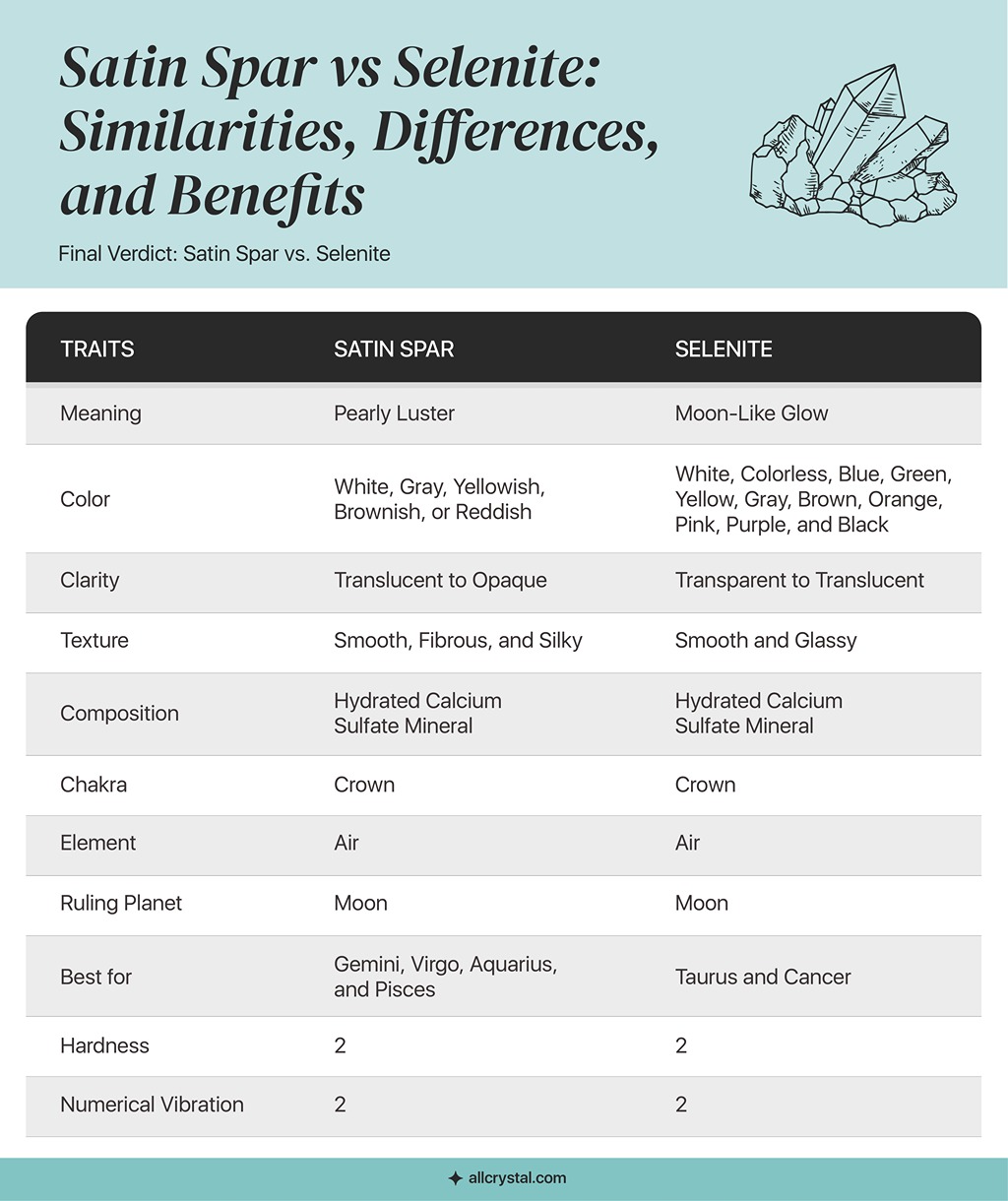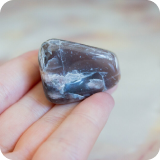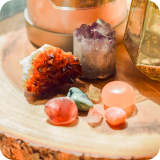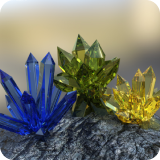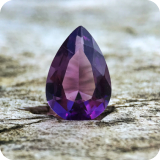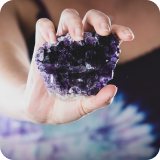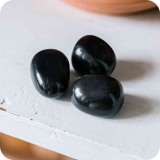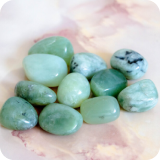- What is Satin Spar?
- What is Selenite?
- 7 Similarities Between Selenite and Satin Spar
- 8 Differences Between Satin Spar and Selenite
- How To Identify Satin Spar From Selenite?
- Final Verdict: Satin Spar vs. Selenite
Are you familiar with the beautiful and mystical crystals Satin Spar and Selenite? You might have come across these two crystals if you’re into minerals.
Both are types of mineral gypsum, but they have different crystal structures. They share similar benefits, such as promoting mental clarity, emotional balance, and aura cleansing, yet their appearance and properties can be similar, leading to confusion.
In this article, we will explore the similarities and differences between Satin Spar and Selenite properties and their unique benefits. So, is Satin Spar the same as Selenite? Let’s find out!
What is Satin Spar?
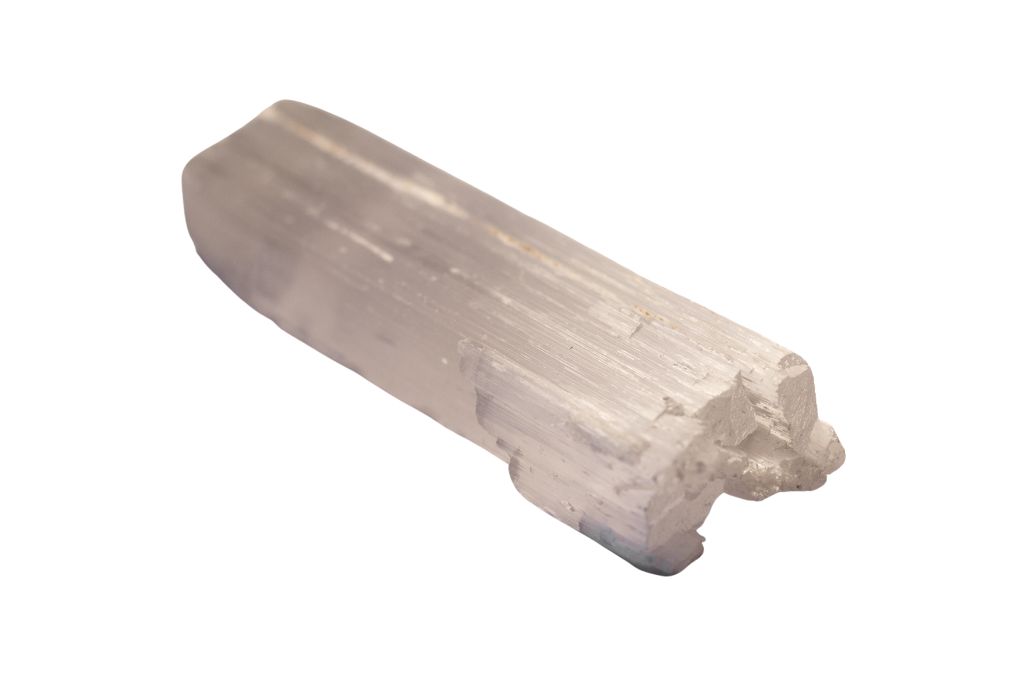
Satin Spar is a fibrous type of gypsum that is recognized for its silky appearance and is typically white or cream. It is typically white or cream and has a fibrous, silky texture that gives it a satin-like appearance. It is formed in caves due to the evaporation of water that contains dissolved gypsum.
Its name is derived from the French term “satiné,” which means satin-like, referring to its smooth and lustrous appearance.
In Ancient Egypt, Satin Spar was made into jewelry and other decorative items. The Greeks believed Satin Spar had healing properties and used it to cure various ailments.
Satin Spar’s spiritual meaning goes beyond its physical appearance, as it is believed to have protective properties against negative energy. It enhances mental clarity, promotes emotional balance, and improves communication skills.
Many believe Satin Spar aids in spiritual growth, meditation, and self-discovery, making it a popular crystal for those seeking inner peace and enlightenment.
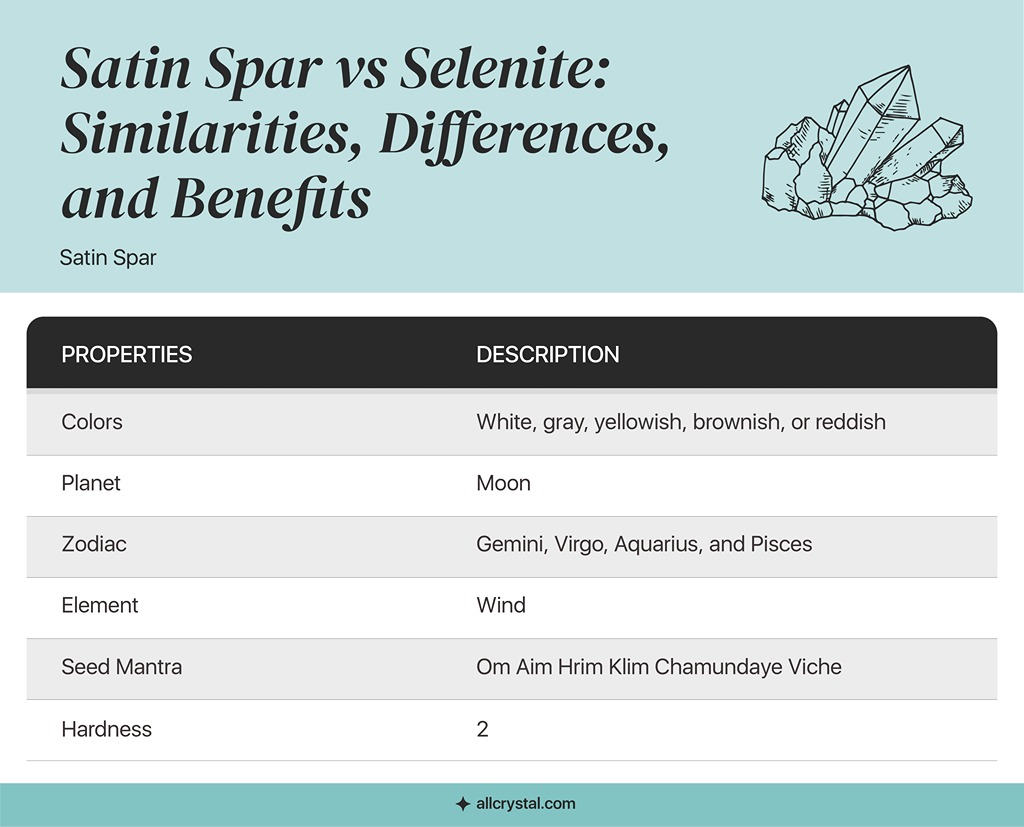
What is Selenite?
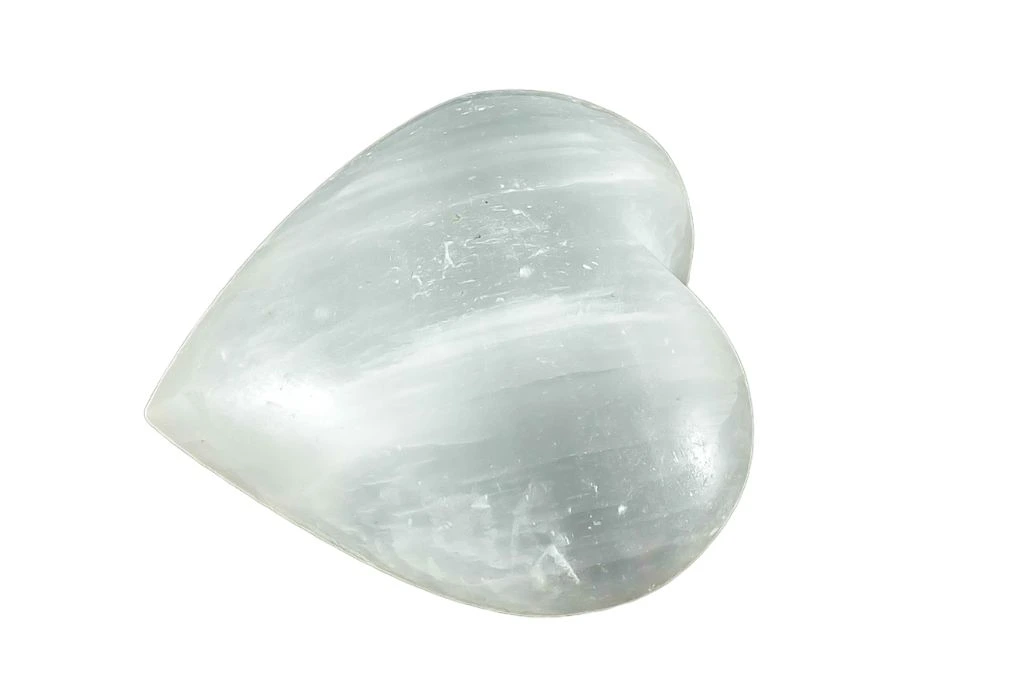
Selenite is a mineral that belongs to the family of gypsum crystals. The name comes from the Greek word “Selene,” which means “moon,” due to its shiny appearance that resembles the moon’s glow. It is sometimes called “true selenite” to set it apart from other types of gypsum crystals.
Selenite crystals are commonly colorless, translucent, or transparent, with a pearly luster. They have a unique structure of long, flat, blade-like formations that can be easily separated into thin sheets.
Crystal enthusiasts often utilize Selenite wands to aid in energy healing and Selenite charging due to their metaphysical properties.
In metaphysical circles, Selenite is believed to have numerous benefits, including promoting mental clarity, enhancing spiritual awareness, and cleansing negative energy from the body and space.
It also stimulates the Crown Chakra, which helps connect individuals to their higher consciousness. Selenite can be used to charge other crystals and gemstones due to its Selenite charging properties.
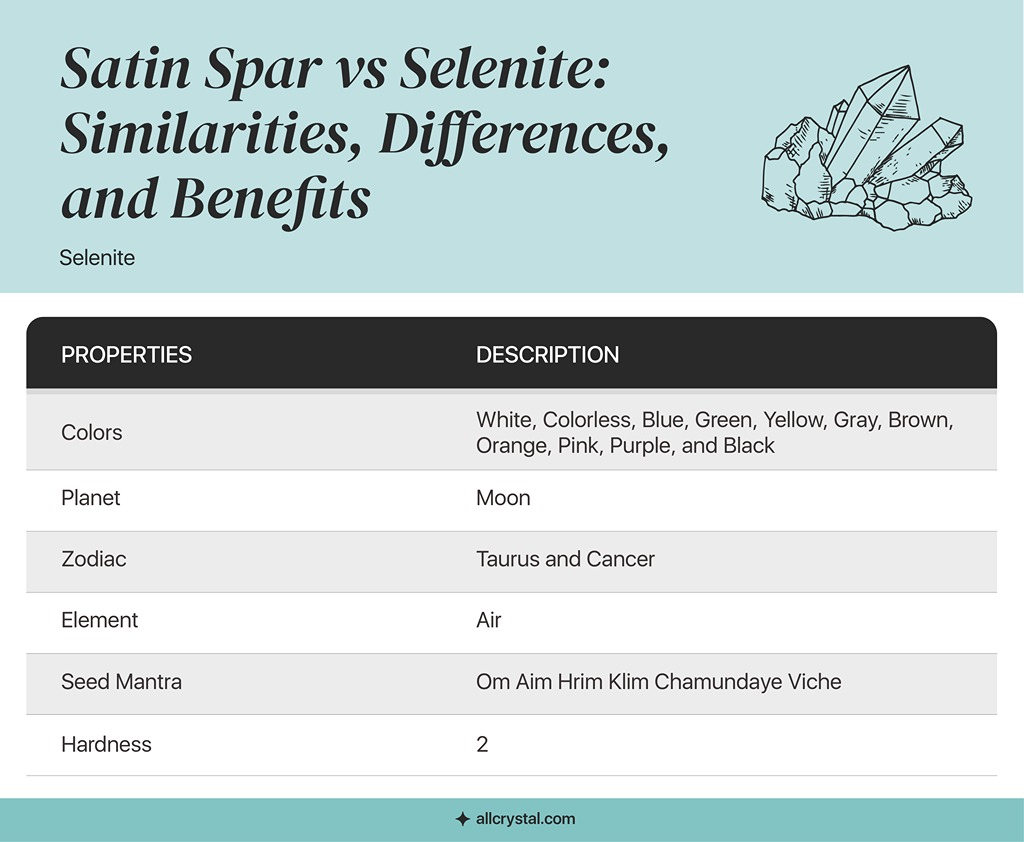
7 Similarities Between Selenite and Satin Spar
Satin Spar and Selenite are two types of gypsum crystals that share many similarities. Here are seven similarities between them:
Form of Gypsum
Both crystals are soft sulfate minerals composed of calcium sulfate dihydrate. They have similar chemical compositions but different crystalline structures that give them distinct physical properties.
Hardness
Satin Spar and Selenite share a similar characteristic regarding their hardness, which is rated at a low level of 2 on the Mohs scale. This means they are delicate minerals that require gentle handling to prevent scratches and fractures. To ensure their longevity and protection, storing them in a secure place is essential.
Physical Composition
Satin Spar and Selenite are minerals that look alike due to their fibrous, satin-like appearance. This distinct feature results from the way they form, which creates layers of fibrous crystals that reflect light differently.
Cleansing Energies
Satin Spar and Selenite are believed to have powerful cleansing energies that can help clear negative energy and promote a sense of peace and tranquility.
Crown Chakra
Satin Spar and Selenite are associated with the Crown Chakra, the energy center that governs spiritual connection, enlightenment, and higher consciousness. They are often used in meditation and spiritual practices to enhance awareness and connection to the divine.
Crystal Structure
Both Satin Spar and Selenite have a similar crystal structure, with long, slender crystals that can form in various shapes and sizes.
Crystal Healing
Both Satin Spar and Selenite are popular choices in crystal healing due to their unique properties and versatile uses. They are often used for their cleansing and healing energies and for promoting spiritual growth and connection.
8 Differences Between Satin Spar and Selenite
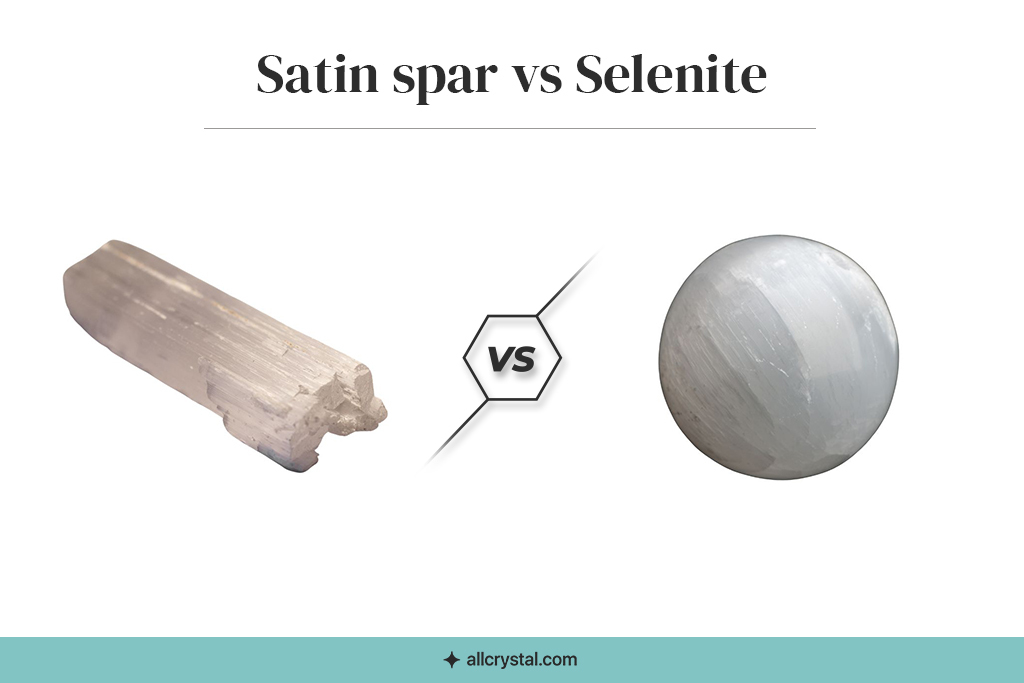
Satin Spar and Selenite may share some similarities but differ significantly. Here are eight key differences between the two minerals:
Uses in Decoration
A difference between these two minerals is their use in decoration. Satin Spar is often used as a substitute for Gypsum Flower or Desert Rose, as it has a similar appearance. On the other hand, Selenite is often used in crystal grids, as its long, clear crystals are said to help with clarity and communication.
Color Variations
Satin Spar and Selenite also differ in their color variations. Satin Spar is typically white or cream-colored, while Selenite can range from clear to opaque and may have a yellow, orange, or brown tint due to impurities.
Size and Shape
Satin Spar and Selenite can also differ in size and shape. Satin Spar usually forms in fibrous or botryoidal aggregates, while Selenite can form in large, impressive crystals. Selenite crystals can be several meters long, while Satin Spar typically includes smaller, more delicate clusters.
Healing Properties
Satin Spar and Selenite are believed to have different healing properties. Satin Spar is said to be calming and soothing, making it helpful for meditation and stress relief. Selenite is said to promote mental clarity, enhance intuition, and provide protection from negative energy.
Both minerals are commonly used in crystal healing and can be placed on the body or used in crystal grids.
Solubility
Satin Spar is more soluble in water than Selenite. This means Satin Spar can be easily dissolved in water, while Selenite is more resistant to water erosion and weathering.
Vibrations
Some people believe that Satin Spar has a more gentle and calming energy, making it useful for stress relief and promoting relaxation. While Selenite is often associated with higher frequencies and is thought to have a stronger connection to the spiritual realm. It is believed to aid in communication with angels and spirits.
Market Price
Selenite is generally more expensive than Satin Spar due to its popularity and unique appearance. Selenite often comes in larger, more intricate formations, making it more desirable to collectors and enthusiasts.
While still a popular choice, Satin Spar is generally more affordable and easier to find in smaller sizes and shapes.
Availability
Finding large, high-quality formations of Selenite can be more challenging than finding Satin Spar since it’s a rarer form of gypsum. Satin Spar is more widespread and can be found in many places worldwide.
How To Identify Satin Spar From Selenite?
Identifying Satin Spar and Selenite can be challenging, as both minerals are made of the same chemical compound – gypsum –- and have a similar appearance.
To distinguish between Satin Spar and Selenite, examine their physical characteristics. Satin Spar is commonly referred to as “fibrous gypsum” because of its long and thin fibrous crystal formation. This gives it a silky, satin-like luster, from where it gets its name.
Selenite typically forms in large, transparent, tabular crystals with smooth, flat faces and a glassy luster. It can also develop in columnar or prismatic crystals, but these are rare.
You can also differentiate Satin Spar from Selenite by looking at its color. Satin Spar is usually light-colored or white, but it can also have shades of gray, pink, or brown. Selenite is generally colorless or white, but it can also appear in light tones of green, yellow, or blue.
Other varieties of Selenite can also resemble Satin Spar. For example, Desert Rose is a form of Selenite that forms in a rosette shape and can have a rough, sandy texture on its surface, making it look more like Satin Spar. Gypsum Flower is a form of Selenite that forms in delicate, flower-like clusters and can resemble both Satin Spar and Selenite in appearance.
Final Verdict: Satin Spar vs. Selenite
Satin Spar and Selenite are distinct, beautiful crystals with unique properties and characteristics. To identify them, paying attention to their color, transparency, and texture is essential.
Both stones can be used in various ways, such as in crystal grids, meditation, or energy healing sessions. Whether you choose Satin Spar or Selenite, both crystals are powerful tools to support your well-being and spiritual journey.
